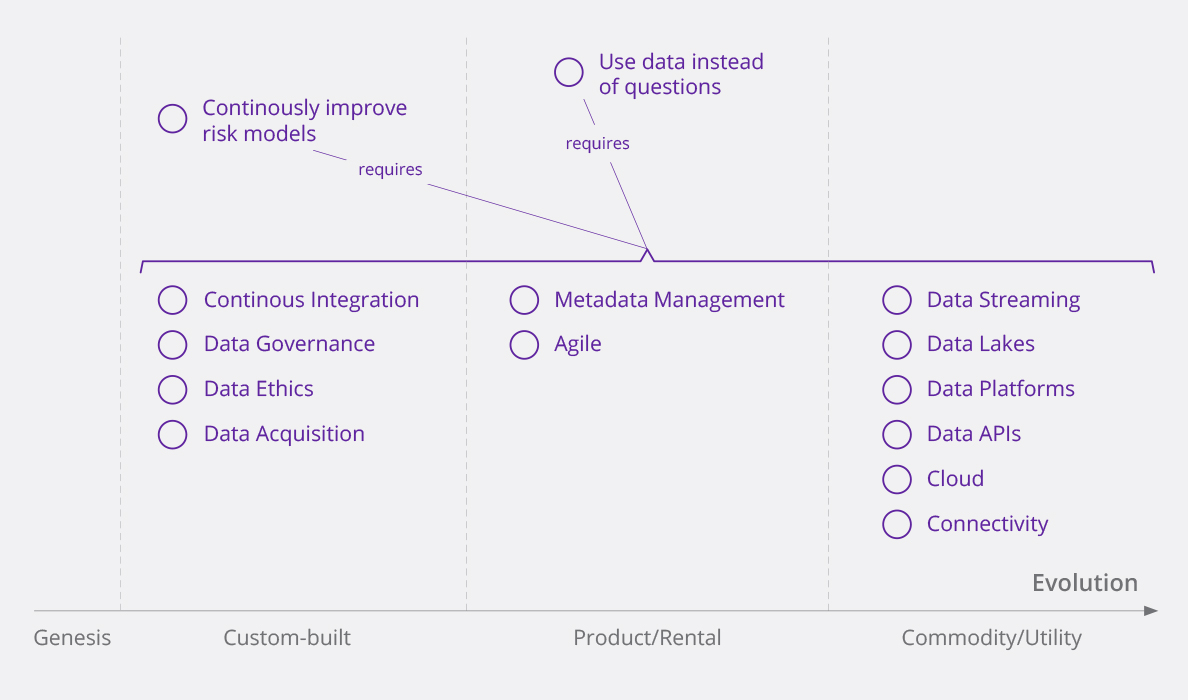In brief
- The insurance industry has access to vast amounts of data that can be leveraged to gain insights and create business value.
- However, many firms struggle to extract meaningful insights from it. Data needs to be integrated from disparate sources such as customer interactions and social media.
- Implementing advanced analytics techniques such as machine learning can help insurers unlock the business value from their data by enabling more accurate predictions and personalized services.
It will come as no surprise to hear that CEOs and CIOs receive masses of promotional material
covering the latest and greatest developments in technology.
Some items explore things like
how to use smartwatches to gain a competitive edge. Others are about building
car-tracking devices and using the data to better-price the risk, all the while championing
a safer driving style or using automation to simplify the offering —
removing the need to make a claim even.
It’s only a matter of time before these small-scale
experiments lead to a breakthrough in the relationship between customer and insurer, causing a
near-revolution that will mean the end of the road for companies unable to adapt.
Handling data at scale
We’re not trying to tell you how to run your business, but organizations are creating and storing
more data than ever. And significant modern terms such as automation, AI and customer 360, all
require an ability to handle data at scale that, previously, was never an issue.
This is
nothing new, though. Insurance has always been a data-handling business. But what is new, is the
scale of this phenomenon.
Exploiting industry trends
This is the first in a series of three blogs covering insurance industry trends, and what your
company needs to do to capitalize on them.
Most of the trend ideas have been with us for
years one way or another, but ease of use is the new black — a fresh slant makes all the difference.
Two decades ago, building a customer base or meeting regulatory requirements were tedious tasks and,
while competition was tough, the market was more or less closed to new players.
Generating added value
Today, the situation is much different. There are lots of global and local organizations generating
huge volumes of data and trying to figure out how to use it to deliver more value. Providing
insurance, explicitly or not, is one of the attractive directions for adding value to existing
products. So, insurance companies face some tough choices. Should they respond? If yes, then
how?
There are no easy answers, particularly with the enormous pressure to be more efficient
in a traditional way without actually changing the nature of the business done. It will work until
new market entrants disrupt the market, segment by segment.
Winning the broker game
Insurance price comparison sites are profitable as long as players have similar risk models and use
a common set of more-or-less standard questions. Change is unwelcome because it generates work — new
questions and workflows need to be implemented, and the comparison site operator might not be
willing to do that just for one provider. And even if the work is done, customers may not be willing
to answer a single question.
The overall situation stops insurance companies innovating and,
so far, the only way forward has been to establish a better brand-customer relationship. There is
another way forward — augmenting the data that the customer has typed in with the data acquired from
different sources in real time.
Making fact-based decisions
For instance, instead of asking where a car is usually parked, you could use data obtained from the
owner’s mobile phone provider to identify the driver. Then, assess how well he or she drives the
car, based on their Bluetooth black box. The availability of this kind of information would reduce
the administrative burden on customers in many situations and, even if it didn’t, it could help
insurers identify dishonest customers.
There are a few components that could be implemented
to enable this sort of operation.

Figure 1: Which components do you need?
Reviewing data ethics
Clearly, many of the necessary components are in place — data streaming, lakes,
platforms, APIs and so on. Cloud and connectivity are readily available too. However, you might need
help creating the mechanisms for collecting and integrating the data, and you’ll need to consider
the ethics of controlling and using the data.
This might mean building proof of concept (PoC)
models and minimum viable products (MVP), which could be accelerated by using an appropriate
InsurTech firm and working with modern Agile technology experts who have experience in the sector.
Applying the aggregator model
In future, the crossover into wider industry will become more apparent. It will be
possible to open the same APIs that aggregators use for other commodity-type providers (carmakers,
smartphone producers, airlines, etc.). Indeed, the rise of food distribution businesses like
Deliveroo is bringing the aggregator model to food shopping too.
The insurance sector has
ceded a lot of control to the aggregator, and is trying to regain that control just as the retail
sector is beginning a slow waltz with a new type of aggregator. The key question for a retailer
entering such an arrangement would be, “is my brand strong enough to retain market share, and does
quality become a lower driver than price?”.
Sharing expert opinion
Various industry experts contributed to this three-part series of blogs, drawing on market
experience, tech knowledge and current customer base to draw their conclusions. You can read the
next blog: Calculate insurance risk more precisely and turbocharge your digital customer
experience and the third blog: Monetize the
customer data you didn’t even know you had.
DXC is the leading provider
of core insurance technology globally, with over 1,900 insurance customers serviced by over 18,500
professionals.
Adaptix, DXC’s Analytics and Engineering business, is the preferred
partner for banks undertaking strategic transformation, and is providing fresh insight into
insurance sector analytics. To learn more, contact: financialservices@adaptix.com








